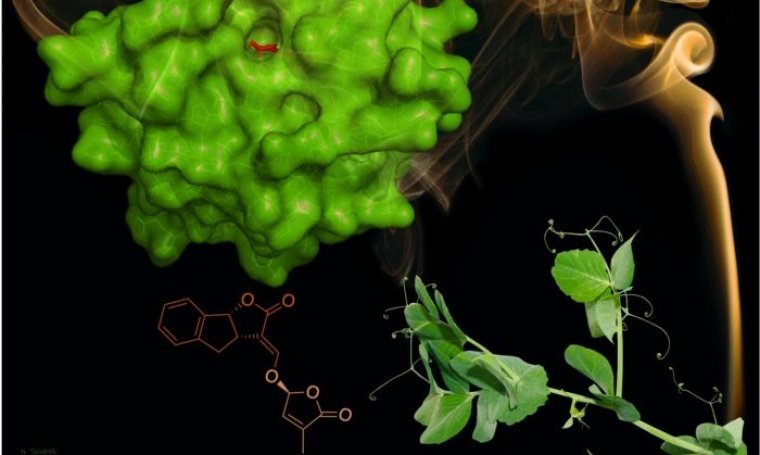| News / Science News |
Plant smoke detectors evolve as hormone sensors
Wildfires are devastating, but they can also bring new life by clearing existing vegetation and allowing new plants to spring up. Many plants in fire-prone areas require exposure to fire for seeds to germinate.

Molecules that evolved to detect smoke have also become hormone sensors in pea plants. Photo: Nitzan Shabek/UC Davis
In the past decade, scientists discovered an ancient receptor protein that can detect molecules called karrikins in smoke from burnt plant material. The "smoke detector" protein, called KAI2, initiates molecular signals that speed up germination of seeds.
Curiously, KAI2 proteins also show up in a wide variety of plant species that do not live in fire zones.
Now, research led by Nitzan Shabek and Angelica Guercio of the University of California, Davis has revealed these receptors in pea plants, showing that KAI2 also plays a role in sensing growth hormones in plants.
"This study uses sophisticated molecular tools to advance our understanding of how a single ancestral gene encoding a protein receptor can become adapted through evolution to recognize internally produced plant hormones or external environmental signals," said Steven Clouse, a program director in NSF's Division of Molecular and Cellular Biosciences.
The researchers looked at peas because they belong to the legume family, one of the largest families of flowering plants, including several crop species. Legumes 'fix' nitrogen from the air through a symbiosis with microbes.
The scientists found that the original KAI2 gene was duplicated early in the evolution of legumes, producing two genes, KAI2A and KAI2B.
Using advanced techniques in genetics, biochemistry and protein crystallography, the biologists found that the two receptors react to distinct ligands, with KAI2B having a wide range, including an emerging class of plant hormones called strigolactones.
"With our collaborators, we were able to integrate our findings from the atomic structures of the KAI2 receptors and mass spectrometry inspection with experiments in plants to uncover how these receptors diverged in evolution to not only sense hormones, but also how they catalyze them," said Shabek. (National Science Foundation)





